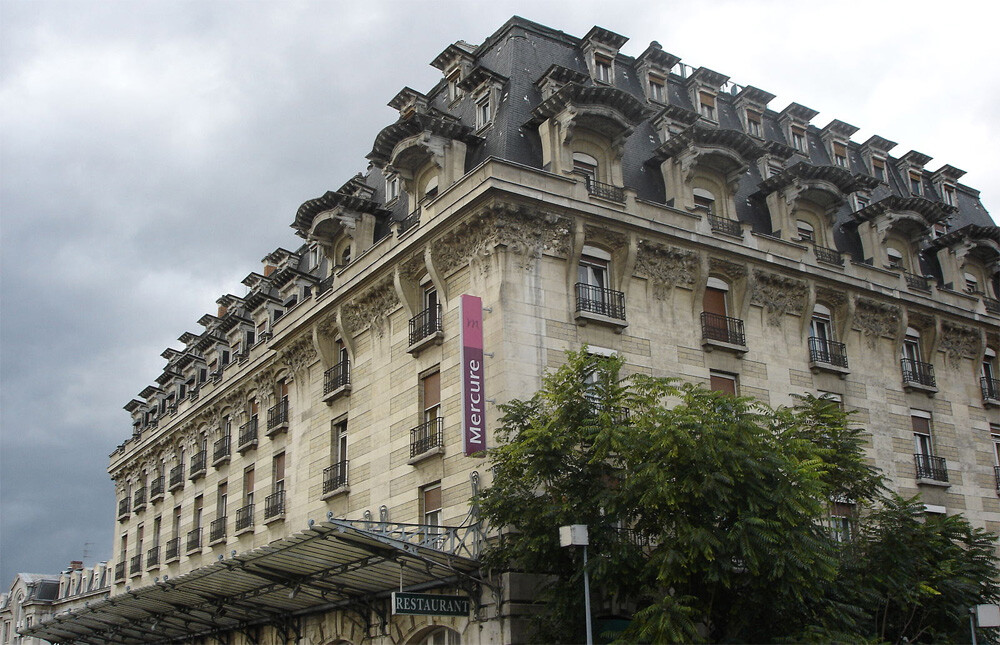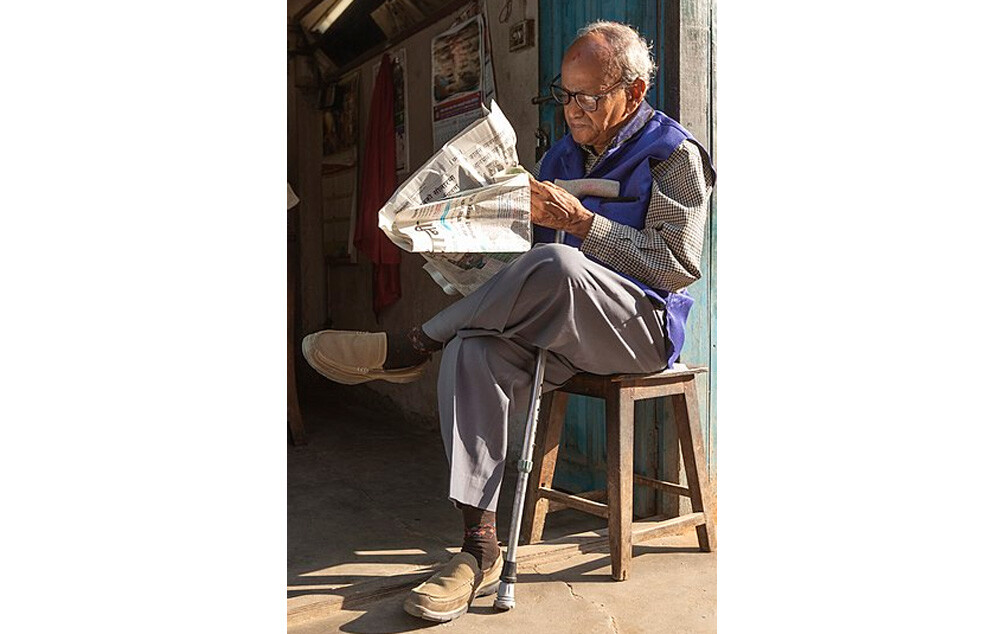Remembering 1980: The Year Cocaine Nazis Conquered Bolivia

1980 was a wild year. The Empire Strikes Back dominated the box office, proving once and for all that movies are better when one of the characters unexpectedly turns out to be a full-blown muppet. Ronald Reagan defeated Jimmy Carter for the US presidency, the cocaine Nazis conquered Bolivia, and Pac-Man debuted in Japan. Meanwhile, in London, a little band called Bananarama held their first ... whoa, whoa, hold on a minute. What was that thing about the cocaine Nazis? That seems worth digging into a little further.

As it turned out, 1980 was the year of the “Cocaine Coup,” when the government of Bolivia was overthrown by a jerkass alliance of fugitive Nazis and cocaine traffickers. It was as if everyone James Bond ever kicked into their own shark tank suddenly came back to life and decided to take over a country.
Jewel Thieves, Cold Fusion, And America’s Secret Nazi Barbie
To understand what happened in Bolivia, we first have to jump back four decades to Nazi-occupied France, where a captain named Klaus Barbie was appointed head of the Gestapo secret police in Lyon. Barbie was a vicious little creep sadly born slightly too early for people to find his name funny (he did resemble the doll a bit, in the sense that they both had alarmingly lifeless eyes). He set up his headquarters in Lyon’s luxury Hotel Terminus, where he quickly became notorious for inflicting brutal tortures on suspected resistance fighters, often while stroking a cat and grinning. In one of his most notorious cases, Barbie extracted the location of 44 Jewish children, who had been hidden in the small town of Izieu, then sent them all to Auschwitz. He was ultimately held responsible for the deaths of up to 25,000 people.

After the war, US intelligence heard about the “Butcher of Lyon” and were like “wow, we’ve gotta get that guy!” Barbie was promptly signed up as an informer by the Army Counterintelligence Corps, receiving the princely salary of $1,700 a month (in comparison, US army privates started out at $50 a month, although they were allowed to keep any shrapnel they could pry out of their kneecaps). Barbie worked for the US until 1951, when French intelligence suddenly noticed that the creepy guy who kept poking around asking about communists was one of their most wanted criminals. They promptly issued an arrest warrant, at which point the Americans realized that hiring a literal child-murderer was going to make them look very, very bad. So they quietly arranged for Barbie to escape to South America.
The Army’s role in all of this might have escaped notice if Barbie hadn’t bumped into an international jewel thief named Bobby Wilson, who was also lying low in Bolivia. The pair hit it off and Barbie told Wilson about his wartime experiences, including his work for the Americans. In the 1980s, Wilson shared tapes of these conversations with ABC News, sparking an investigation by the Department of Justice, which concluded that “officers of the United States government were directly responsible for ... arranging his escape from the law.” The US subsequently issued a formal apology to the French government (we assume there’s a special Hallmark store in Washington selling little “whoops, our bad!” cards for these occasions).

Barbie wasn’t alone in heading for South America. As many as 9,000 suspected Nazi war criminals are believed to have fled via the “Ratlines” to South America. The majority headed for Argentina, where President Juan Peron believed that German expertise could help develop the country’s economy—a fiction that he was only disabused of after a former Nazi rocket scientist tricked him into spending quite a lot of Argentina’s GDP developing a phony cold fusion reactor in an isolated mountain fortress. But Barbie ended up settling in Bolivia, where he set himself up as a freelance “security consultant.” And that’s when things got weird.
Che Guevara, The Spanish Foreign Legion And Pablo Escobar’s Airborne Scammers
During Barbie’s time in South America, some exciting new opportunities began opening up in the Bolivian economy. Back in 1951, cocaine use was largely restricted to jazz musicians trying to persuade themselves scatting was a good idea. But by the 1970s, it seemed like the whole world was honking on the old nose trombone. In 1977 alone, every single person in New York City stayed up for three days straight, then got thrown out of Studio 54 for trying to persuade David Bowie to invest in a disco-themed fondue restaurant called Fundue. Of course, this was all great news for Bolivian farmers, who already grew most of the world’s coca crop. With production skyrocketing, Bolivia’s coca trade soon came to be dominated by a wealthy cattle rancher turned drug trafficker named Roberto Suarez Gomez.

Unfortunately, Bolivia had kind of missed the boat when it came to actually producing cocaine. Instead, Suarez found himself stuck in the role of middleman, buying semi-refined coca paste from Bolivian farmers and selling it on to Colombian cartels, who turned it into cocaine and shipped it overseas. With the rise of Pablo Escobar’s Medellin Cartel, Suarez found himself increasingly getting pushed around. Not only did Escobar keep most of the profits, but his pilots had an annoying habit of loading a plane full of valuable coca paste and then taking off without paying, presumably leaving Suarez standing on the runway shaking his fist and yelling, “This isn’t even funny anymore guys!” So Suarez started looking around for some muscle. And who should be lurking around Bolivia but well-known “security consultant” Klaus Barbie.
Since arriving in Bolivia, Barbie had been making a living as a torture expert for various South American dictatorships, while also spying for West Germany’s BND intelligence agency. He later boasted that he had been responsible for hunting down Che Guevara, who was killed while trying to organize a Marxist insurgency in Bolivia in 1969. There’s not much evidence for that, but certainly he was involved in attacks on striking miners and left-wing activists. In the 1970s, he became “special security aide” to Bolivian dictator Hugo Banzer, who was actively encouraging the cocaine trade to prop up the country’s economy. Naturally, Banzer introduced Barbie to his other good friend Suarez Gomez. And that’s when the great Nazi-drug lord alliance really kicked off.

Barbie recruited Suarez a bodyguard crew of fascist lunatics from all four corners of the globe. Led by a wanted German neo-Nazi named Joachim Fiebelkorn, the group included Rhodesian mercenaries, right-wing Italian bombers, former members of the Spanish Foreign Legion and French OAS terrorists on the run after trying to assassinate Charles de Gaulle. As Fiebelkorn proudly reported, there were also several actual SS veterans, including “Herbert Kopplin ... known for his sadism and for using the butt of his rifle to interrogate prisoners.” Another associate was Stefano delle Chiaie, the world’s most notorious neo-fascist terrorist, who was hiding out in South America while wanted for questioning over his involvement in the Bologna Bombing, which killed 85 people in 1980. It was basically a supervillain team-up, except that Captain America wasn’t even around to sock anyone in the jaw. They called themselves ... the Fiancés of Death. Yeah, we’d say it sounds cooler in Spanish, but honestly it really doesn’t.
The Fiancés Of Death, Secret Jungle Labs, And Barbie’s Little Electroshock Machines.
Barbie’s Nazi Fiancés may sound like Mattel’s least popular toy line, but they quickly proved their value to Suarez by setting fire to most of Bolivia’s competing coca farms, and at least a couple of the farmers to boot. The Mayo Yayo Gang also helped solve his problems with Escobar by standing around all his airfields with bazookas, ready to shoot down any transport planes that tried to take off without paying. But a bigger problem was looming on the horizon. Embarrassed by the arrest of several close relatives for cocaine trafficking, General Banzer had been forced to relinquish power in 1978, leading to a rapid-fire series of rigged elections and coups. Under pressure from US president Jimmy Carter, free elections were scheduled for 1980. A broad left-wing coalition looked certain to win, promising to crack down on drug trafficking in their manifesto.

This was bad news for Suarez and very bad news for Barbie, who was under increased pressure from the Nazi hunters Serge and Beate Klarsfeld. A French husband-and-wife team, the Klarsfelds had brought international attention to Barbie’s hideout in Bolivia, and had even discussed kidnapping him and smuggling him out of the country to stand trial. With international pressure mounting, Barbie was terrified that a democratic government would extradite him to face justice in France or Israel. He quickly began plotting a coup with General Luis Garcia Meza, the far-right head of Bolivia’s military academy. Suarez quickly came on board as the financial backer, while swastikas began mysteriously appearing on walls throughout the capital.
Foreign support was obtained from Argentina and Chile, who had both employed Stefano Delle Chiaie as a freelance assassin. For example, when the exiled minister Bernardo Leighton criticized Chile’s Pinochet government, it was Delle Chiaie who arranged for him to be shot in the head in Rome. Now, both countries provided training for the coup plotters, with Argentina even providing computerized lists of targets for the death squad Delle Chiaie was to lead in Bolivia. None of this was kept remotely secret. A full month before the coup, a Bolivian newspaper reported that “a leading businessman in La Paz has suggested that the possible army takeover next month should be called the Cocaine Coup.” And you know things are getting bad when the local paper has to include a coup forecast.

The plotters struck in July 1980. Squads of hooded Fiancés raced through the capital in ambulances, executing dissidents and seizing government buildings. The burnt and castrated bodies of left-wing politicians were dumped in the streets, while cocaine traffickers were released from prison and formed into a paramilitary squad to support the new regime. Masked men with European accents and swastika armbands broke into shops and warehouses in a frenzy of looting, while Suarez’s cousin presided over the Interior Ministry, where opponents of the new government were “introduced to Barbie’s electro-shock machines.” Seriously, if you made this the backdrop to an '80s action movie the audience would have dismissed the whole thing as ludicrously over-the-top.
The Cocaine Coup Collapses
The coup quickly drew international condemnation, but the whole thing had been carefully timed to overcome any problems. As it happened, 1980 was also an election year in the US, with Ronald Reagan heavily favored to beat Carter. The plotters figured that they could ride out a few months of isolation, then hopefully normalize relations with the more conservative Reagan administration. Fortunately, it turned out that while the 1980s had quite a high tolerance for both cocaine and South American fascists, the open combination of the two was a little too much for everyone.

And these guys were very openly plotting to dominate the world’s cocaine trade. A CIA agent stationed in Bolivia at the time recalled flying over a "jungle-based cocaine-manufacturing complex containing laboratories, heavy armaments, radio communications, and landing fields that could accommodate a modern jumbo jet," concluding that they were seeking to use the drug trade as the backbone of "a military-industrial setup right out of a West Point textbook. It was unbelievable." But by this point the Cocaine Coup had become so toxic that international recognition was off the table. The Reagan administration refused to restore ties, while more mainstream elements of the Bolivian military began plotting their own coup.
Garcia Meza was forced from office in 1981, after less than a year in power. The military hung on until 1982, when it was forced to hand over power to a civilian government. Garcia Meza fled overseas, but was eventually sent back to serve a 30-year jail sentence. Roberto Suarez Gomez retreated to his fortified mansion in the north of the country, but was finally arrested in 1988. He spent the rest of his life in prison, while complaining to anyone who would listen that his nephew had stolen his drug empire. Overall, their coup is believed to have cost the lives of at least 1,000 people, making it the deadliest of the 190 coups in Bolivian history.

As for Barbie, the democratic new government was determined to extradite him to France, where he was wanted for crimes against humanity. In 1983, a journalist named Gustavo Sanchez was appointed interior minister. Sanchez had once plotted with Nazi hunter Serge Klarsfeld to kidnap Barbie, and his first mission in government was to get rid of him. Barbie was arrested, supposedly for some minor tax evasion charges. Sanchez drove him to the airport, where Barbie believed he would be flown to a Bolivian prison. On hearing he was actually going to France, Barbie became terrified, loudly exclaiming, “It can’t be!”
According to Sanchez, he told Barbie, “Don’t you remember the French adage which says that a criminal always returns to the scene of the crime? Don't you remember sending 600,000 Jews to concentration camps and gas chambers? As you personally killed so many in Lyon, you are going back there.” The former Gestapo officer simply stared at him blankly before trying to dismiss the charges by muttering, “In war there are winners and losers." Sanchez agreed, adding, “You lost. It is time to pay." Barbie died eight years later, in prison in Lyon, the very town where he had committed his worst atrocities a lifetime before.
